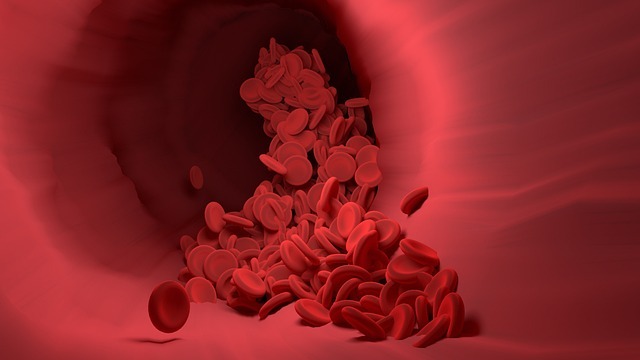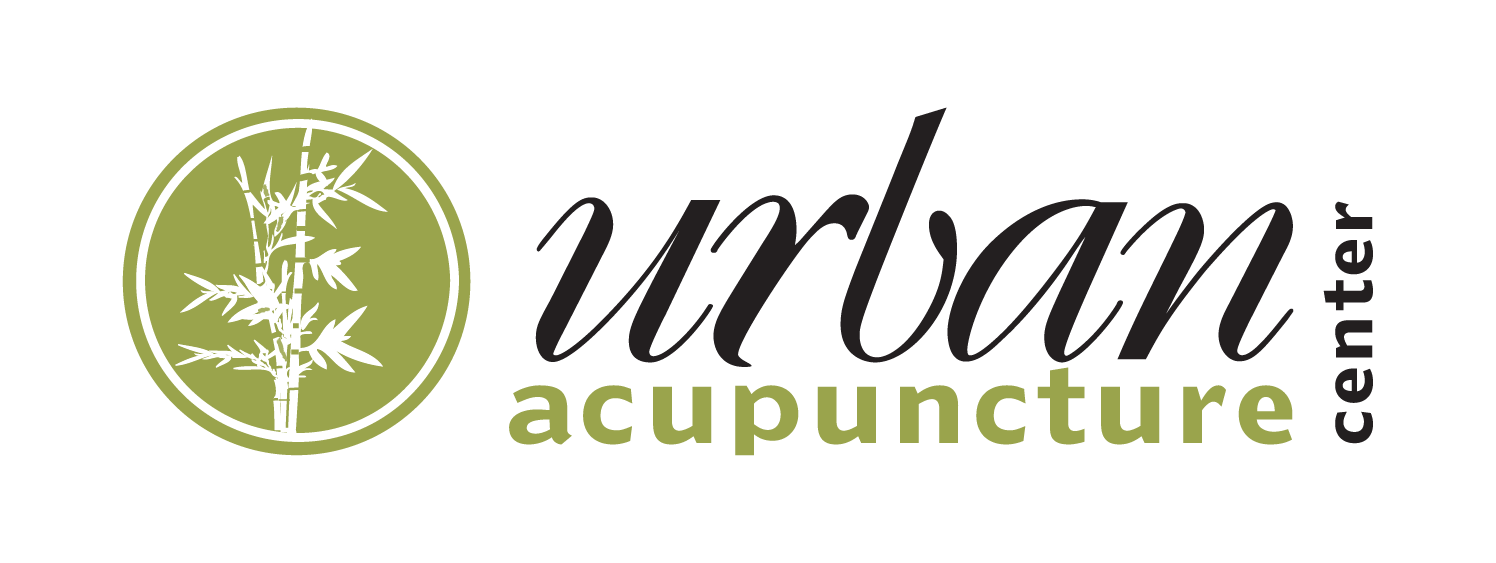by urban-acupuncture | Nov 1, 2024 | Electroacupuncture
Reducing Fibromyalgia Symptoms with Electroacupuncture Treatments
 Fibromyalgia is a chronic condition characterized by widespread musculoskeletal pain, fatigue, sleep disturbances, and cognitive difficulties. Managing fibromyalgia can be particularly challenging due to its complex nature and the variability in symptoms from one patient to another. While traditional treatments include medications, physical therapy, and lifestyle changes, many patients seek alternative therapies for relief. One such alternative is electroacupuncture, a modern adaptation of traditional acupuncture that has shown promise in reducing fibromyalgia symptoms.
Fibromyalgia is a chronic condition characterized by widespread musculoskeletal pain, fatigue, sleep disturbances, and cognitive difficulties. Managing fibromyalgia can be particularly challenging due to its complex nature and the variability in symptoms from one patient to another. While traditional treatments include medications, physical therapy, and lifestyle changes, many patients seek alternative therapies for relief. One such alternative is electroacupuncture, a modern adaptation of traditional acupuncture that has shown promise in reducing fibromyalgia symptoms.
Understanding Electroacupuncture
Electroacupuncture is an advanced form of acupuncture where a mild electrical current is applied to acupuncture needles inserted into specific points on the body. This technique is believed to enhance the therapeutic effects of traditional acupuncture by stimulating nerves, muscles, and connective tissues more effectively. The electrical current used in electroacupuncture is adjustable, allowing practitioners to tailor the treatment to each patient’s needs.
Mechanisms of Action: How Electroacupuncture May Help
The effectiveness of electroacupuncture in managing fibromyalgia symptoms is thought to be linked to several physiological mechanisms:
- Pain Relief Through Endorphin Release: Electroacupuncture is believed to stimulate the release of endorphins, the body’s natural painkillers. By targeting specific acupuncture points, the therapy may help modulate pain perception and provide relief from the chronic pain associated with fibromyalgia.
- Reduction of Inflammation: Inflammation is a contributing factor to fibromyalgia symptoms. Electroacupuncture has been shown to reduce inflammatory markers, which may alleviate pain and discomfort in patients.
- Improvement of Blood Flow and Muscle Relaxation: By enhancing circulation and promoting muscle relaxation, electroacupuncture can help reduce muscle stiffness and tension, common complaints among fibromyalgia patients.
- Neuromodulation: Electroacupuncture may influence the central nervous system by modulating neurotransmitters like serotonin and norepinephrine, which play a crucial role in mood regulation and pain perception. This could help manage the emotional and psychological aspects of fibromyalgia, such as anxiety and depression.
- Improved Sleep Quality: Electroacupuncture may help regulate the autonomic nervous system, leading to improved sleep patterns. Better sleep is crucial for fibromyalgia patients, as poor sleep quality can exacerbate pain and fatigue.
Evidence Supporting Electroacupuncture for Fibromyalgia
Several studies have explored the efficacy of electroacupuncture in managing fibromyalgia symptoms:
- Clinical Trials: A 2019 study published in The Journal of Pain examined the effects of electroacupuncture on fibromyalgia patients and found significant improvements in pain, fatigue, and overall quality of life compared to a control group receiving sham acupuncture. The study highlighted the potential of electroacupuncture as a complementary therapy in managing fibromyalgia.
- Systematic Reviews: A 2021 systematic review and meta-analysis published in Pain Medicine analyzed multiple studies on electroacupuncture for fibromyalgia and concluded that electroacupuncture could reduce pain intensity and improve sleep quality and overall function in patients.
- Patient-Reported Outcomes: Anecdotal evidence and case studies suggest that many patients experience substantial relief from fibromyalgia symptoms with regular electroacupuncture sessions. Patients often report reduced pain, better sleep, and improved mental well-being.
Safety and Considerations
Electroacupuncture is generally considered safe when performed by a qualified and trained practitioner. However, it is not suitable for everyone. People with pacemakers, certain neurological conditions, or a history of seizures should avoid electroacupuncture due to the electrical currents used. Always consult with a healthcare provider before starting any new treatment, especially if there are existing health concerns.
Integrating Electroacupuncture into a Comprehensive Fibromyalgia Management Plan
While electroacupuncture shows promise in reducing fibromyalgia symptoms, it is essential to approach it as part of a comprehensive management plan. Fibromyalgia is a multifaceted condition that often requires a combination of therapies tailored to the individual’s needs. Integrating electroacupuncture with conventional treatments like medications, physical therapy, cognitive-behavioral therapy (CBT), and lifestyle changes can provide a more holistic approach to managing fibromyalgia.
Electroacupuncture offers a potential alternative or complementary therapy for individuals suffering from fibromyalgia, aiming to alleviate pain, improve sleep quality, and enhance overall well-being.
While more research is needed to fully understand its mechanisms and efficacy, the available evidence suggests that electroacupuncture could be a valuable addition to the range of treatments available for fibromyalgia patients. As always, a personalized approach in consultation with healthcare professionals is crucial to managing this challenging condition effectively.
Contact Urban Acupuncture Center in Columbus, OH For More Information
For more information about how acupuncture, massage therapy, electroacupuncture and other alternative healing treatments can help you, please contact the Urban Acupuncture Center Board Certified Licensed Acupuncturist’s team at Indianola Ave, Columbus, Ohio (Clintonville) (614) 725-2488 or click here. Taking new patients in and around greater Columbus, Ohio.
by urban-acupuncture | Oct 22, 2024 | Holistic Health, Treatments
Discover the power of your chakras! ? Hands-On Chakra Workshop
Overview:
 This immersive workshop offers an exploration of chakra balancing techniques. Through a combination of color therapy, crystal therapy, aromatherapy, sound healing, mudra practice, muscle testing, and guided meditation, participants will gain a deeper understanding of their energy centers and learn practical tools for self-care.
This immersive workshop offers an exploration of chakra balancing techniques. Through a combination of color therapy, crystal therapy, aromatherapy, sound healing, mudra practice, muscle testing, and guided meditation, participants will gain a deeper understanding of their energy centers and learn practical tools for self-care.
Workshop Outline:
Introduction to Chakras:
A brief overview of the seven chakras and the importance of balanced chakras for overall well-being.
- Color Therapy: The significance of colors in chakra balancing. Guided meditation using color visualization to activate and harmonize the chakras.
- Crystal Therapy: The energetic properties of various crystals and their alignment with specific chakras. Practical techniques for using crystals to balance and enhance chakra energy.
- Aromatherapy: The therapeutic benefits of essential oils and their connection to the chakras.
- Sound Healing: The vibrational effects of sound on the body and mind. Guided meditation using sound instruments (e.g., singing bowls) to harmonize the chakras.
- Mudra Therapy: The practice of hand gestures (mudras) and their impact on energy flow. Learning specific mudras to balance and activate the chakras.
- Muscle Testing: A kinesiology technique to assess the strength of the body’s energy field and identify chakra imbalances. Using muscle testing to guide chakra balancing practices.
- Guided Meditation: A deep relaxation and visualization practice to connect with the chakras and promote energy flow. Guided meditation to balance and activate each chakra individually.
Workshop Benefits:
- Increased self-awareness and understanding of personal energy centers.
- Improved emotional well-being and stress reduction.
- Enhanced physical health and vitality.
- Practical tools for daily chakra balancing and self-care.
- A supportive community of like-minded individuals.
Workshop Materials:
- Crystals (various types)
- Essential oils
- Sound instruments (e.g., singing bowls, chimes, gong)
- Meditation mats or cushions
- Blankets (for comfort)
Note: Participants are encouraged to wear comfortable clothing and bring a journal for note-taking.
Energy Exchange: $62
Date: 10/27 Time: 2-3:30pm Location: Urban Acupuncture Center
Register for Hands-On Workshop
by urban-acupuncture | Oct 10, 2024 | Electroacupuncture
Electroacupuncture Can Help Stimulate the HPA axis, Which Helps Regulate Stress Responses, Inflammation, and Blood Flow
 Electroacupuncture is a modern adaptation of traditional acupuncture that involves the application of electrical stimulation to acupuncture needles. This technique has been shown to stimulate the hypothalamic-pituitary-adrenal (HPA) axis, which is integral in regulating stress responses, inflammation, and blood flow.
Electroacupuncture is a modern adaptation of traditional acupuncture that involves the application of electrical stimulation to acupuncture needles. This technique has been shown to stimulate the hypothalamic-pituitary-adrenal (HPA) axis, which is integral in regulating stress responses, inflammation, and blood flow.
How Electroacupuncture Works
Hypothalamic-Pituitary-Adrenal Axis Stimulation:
- The HPA axis consists of the hypothalamus, pituitary gland, and adrenal glands. It plays a critical role in managing the body’s response to stress and regulating various physiological processes, including blood flow and inflammation.
- Electroacupuncture stimulates the HPA axis, promoting the release of endorphins and other neurochemicals that enhance blood circulation and reduce inflammatory responses.
Benefits of Improved Blood Flow
Enhanced Healing:
- Increased blood flow ensures that more oxygen and essential nutrients are delivered to tissues, accelerating the body’s natural healing process.
Pain Reduction:
- Improved circulation helps reduce pain by alleviating inflammation and decreasing swelling in affected areas.
Cardiovascular Health:
- Regular electroacupuncture sessions can contribute to better cardiovascular health by maintaining healthy blood pressure levels and promoting arterial health.
Applications in Medicine
The ability of electroacupuncture to improve blood flow and reduce inflammation makes it beneficial for treating various conditions:
- Chronic Pain: Electroacupuncture can help manage chronic pain conditions such as arthritis and fibromyalgia by reducing inflammation and improving blood flow.
- Injuries: Enhanced blood circulation promotes faster healing of muscle and joint injuries.
- Post-Surgical Recovery: Patients can experience reduced pain and swelling, leading to quicker recovery times after surgery.
Electroacupuncture’s stimulation of the HPA axis results in significant improvements in blood flow and reductions in inflammation, making it an effective and non-invasive treatment for a variety of health conditions.
Its benefits in promoting healing, alleviating pain, and supporting cardiovascular health highlight its potential as a valuable tool in modern medical practice.
Contact Urban Acupuncture Center in Columbus, OH For More Information
For more information about how acupuncture, massage therapy, electroacupuncture and other alternative healing treatments can help you, please contact the Urban Acupuncture Center Board Certified Licensed Acupuncturist’s team at Indianola Ave, Columbus, Ohio (Clintonville) (614) 725-2488 or click here. Taking new patients in and around greater Columbus, Ohio.
by urban-acupuncture | Oct 1, 2024 | Electroacupuncture
Electroacupuncture Can Help Accelerate the Activity of the Cells Responsible for Bone Formation
 Electroacupuncture combines traditional acupuncture with electrical stimulation, enhancing its therapeutic effects. When needles are inserted at specific points and electrical impulses are applied, they stimulate the nervous system and promote healing processes.
Electroacupuncture combines traditional acupuncture with electrical stimulation, enhancing its therapeutic effects. When needles are inserted at specific points and electrical impulses are applied, they stimulate the nervous system and promote healing processes.
Benefits for Bone Healing
- Nerve Regeneration: The electrical stimulation helps regenerate nerves, which is crucial for the recovery of bone and surrounding tissues.
- Bone Growth: Electroacupuncture promotes the activity of osteoblasts, the cells responsible for bone formation, accelerating the healing process.
- Ligament Health: It enhances ligament strength and elasticity, supporting overall joint health and stability, essential for proper bone healing.
Applications in Medicine
- Fractures: Electroacupuncture can significantly reduce the healing time of bone fractures.
- Post-Surgical Recovery: It aids in the recovery process after orthopedic surgeries by promoting faster bone and tissue regeneration.
- Osteoporosis: Regular sessions can help manage osteoporosis by stimulating bone density and strength.
Electroacupuncture is a promising technique for accelerating bone healing, improving nerve regeneration, bone growth, and ligament health.
This non-invasive therapy offers an effective solution for patients recovering from fractures, surgeries, and managing chronic bone conditions.
Contact Urban Acupuncture Center in Columbus, OH For More Information
For more information about how acupuncture, massage therapy, electroacupuncture and other alternative healing treatments can help you, please contact the Urban Acupuncture Center Board Certified Licensed Acupuncturist’s team at Indianola Ave, Columbus, Ohio (Clintonville) (614) 725-2488 or click here. Taking new patients in and around greater Columbus, Ohio.
by urban-acupuncture | Sep 14, 2024 | Community, Event, Holistic Health
 Join Raj and dig deeper into the 7 chakras, connecting with each of their symbols, elements, colors, petals, and more. Explore different healing techniques and learn various methods to open, clear, and balance each chakra. With her expert guidance, Raj will guide you through Mudras and teach you how to activate your chakras with special hand positions. These hand positions called Hasta-Mudra send energy to specific chakras. Additionally, you will learn to activate your endocrine glands and organs with color and crystal healing. Raj will also cover aromatherapy and how to integrate essential oils to effectively balance and align your chakras.
Join Raj and dig deeper into the 7 chakras, connecting with each of their symbols, elements, colors, petals, and more. Explore different healing techniques and learn various methods to open, clear, and balance each chakra. With her expert guidance, Raj will guide you through Mudras and teach you how to activate your chakras with special hand positions. These hand positions called Hasta-Mudra send energy to specific chakras. Additionally, you will learn to activate your endocrine glands and organs with color and crystal healing. Raj will also cover aromatherapy and how to integrate essential oils to effectively balance and align your chakras.
No prerequisite class is required. Anyone can benefit from the knowledge gained by attending a Chakra Workshop. Participants who learn to balance their energy centers can:
1. Improve physical & mental well-being
2. Enhance intuition for spiritual growth
3. Connect to inner wisdom
4. Build stress management & relaxation skills
5. Find inner peace & fulfillment and
6. Develop tools for self-healing and personal empowerment
Limited spots available. Book your spot now by clicking the link below (or call the office) and embark on a transformative experience on Sunday, September 22nd from 2:00-4:30 pm.
Energy exchange: $108 or EARLY BIRD (until September 16th) $98
CLICK HERE to Register for Journey into the 7 Chakras Workshop
Contact Urban Acupuncture Center in Columbus, OH For More Information
For more information about how acupuncture, massage therapy, electroacupuncture and other alternative healing treatments can help you, please contact the Urban Acupuncture Center Board Certified Licensed Acupuncturist’s team at Indianola Ave, Columbus, Ohio (Clintonville) (614) 725-2488 or click here. Taking new patients in and around greater Columbus, Ohio.
 Fibromyalgia is a chronic condition characterized by widespread musculoskeletal pain, fatigue, sleep disturbances, and cognitive difficulties. Managing fibromyalgia can be particularly challenging due to its complex nature and the variability in symptoms from one patient to another. While traditional treatments include medications, physical therapy, and lifestyle changes, many patients seek alternative therapies for relief. One such alternative is electroacupuncture, a modern adaptation of traditional acupuncture that has shown promise in reducing fibromyalgia symptoms.
Fibromyalgia is a chronic condition characterized by widespread musculoskeletal pain, fatigue, sleep disturbances, and cognitive difficulties. Managing fibromyalgia can be particularly challenging due to its complex nature and the variability in symptoms from one patient to another. While traditional treatments include medications, physical therapy, and lifestyle changes, many patients seek alternative therapies for relief. One such alternative is electroacupuncture, a modern adaptation of traditional acupuncture that has shown promise in reducing fibromyalgia symptoms.
 This immersive workshop offers an exploration of chakra balancing techniques. Through a combination of color therapy, crystal therapy, aromatherapy, sound healing, mudra practice, muscle testing, and guided meditation, participants will gain a deeper understanding of their energy centers and learn practical tools for self-care.
This immersive workshop offers an exploration of chakra balancing techniques. Through a combination of color therapy, crystal therapy, aromatherapy, sound healing, mudra practice, muscle testing, and guided meditation, participants will gain a deeper understanding of their energy centers and learn practical tools for self-care. Electroacupuncture is a modern adaptation of traditional acupuncture that involves the application of electrical stimulation to acupuncture needles. This technique has been shown to stimulate the hypothalamic-pituitary-adrenal (HPA) axis, which is integral in regulating stress responses, inflammation, and blood flow.
Electroacupuncture is a modern adaptation of traditional acupuncture that involves the application of electrical stimulation to acupuncture needles. This technique has been shown to stimulate the hypothalamic-pituitary-adrenal (HPA) axis, which is integral in regulating stress responses, inflammation, and blood flow. Electroacupuncture combines traditional acupuncture with electrical stimulation, enhancing its therapeutic effects. When needles are inserted at specific points and electrical impulses are applied, they stimulate the nervous system and promote healing processes.
Electroacupuncture combines traditional acupuncture with electrical stimulation, enhancing its therapeutic effects. When needles are inserted at specific points and electrical impulses are applied, they stimulate the nervous system and promote healing processes. Join Raj and dig deeper into the 7 chakras, connecting with each of their symbols, elements, colors, petals, and more. Explore different healing techniques and learn various methods to open, clear, and balance each chakra. With her expert guidance, Raj will guide you through Mudras and teach you how to activate your chakras with special hand positions. These hand positions called Hasta-Mudra send energy to specific chakras. Additionally, you will learn to activate your endocrine glands and organs with color and crystal healing. Raj will also cover aromatherapy and how to integrate essential oils to effectively balance and align your chakras.
Join Raj and dig deeper into the 7 chakras, connecting with each of their symbols, elements, colors, petals, and more. Explore different healing techniques and learn various methods to open, clear, and balance each chakra. With her expert guidance, Raj will guide you through Mudras and teach you how to activate your chakras with special hand positions. These hand positions called Hasta-Mudra send energy to specific chakras. Additionally, you will learn to activate your endocrine glands and organs with color and crystal healing. Raj will also cover aromatherapy and how to integrate essential oils to effectively balance and align your chakras.